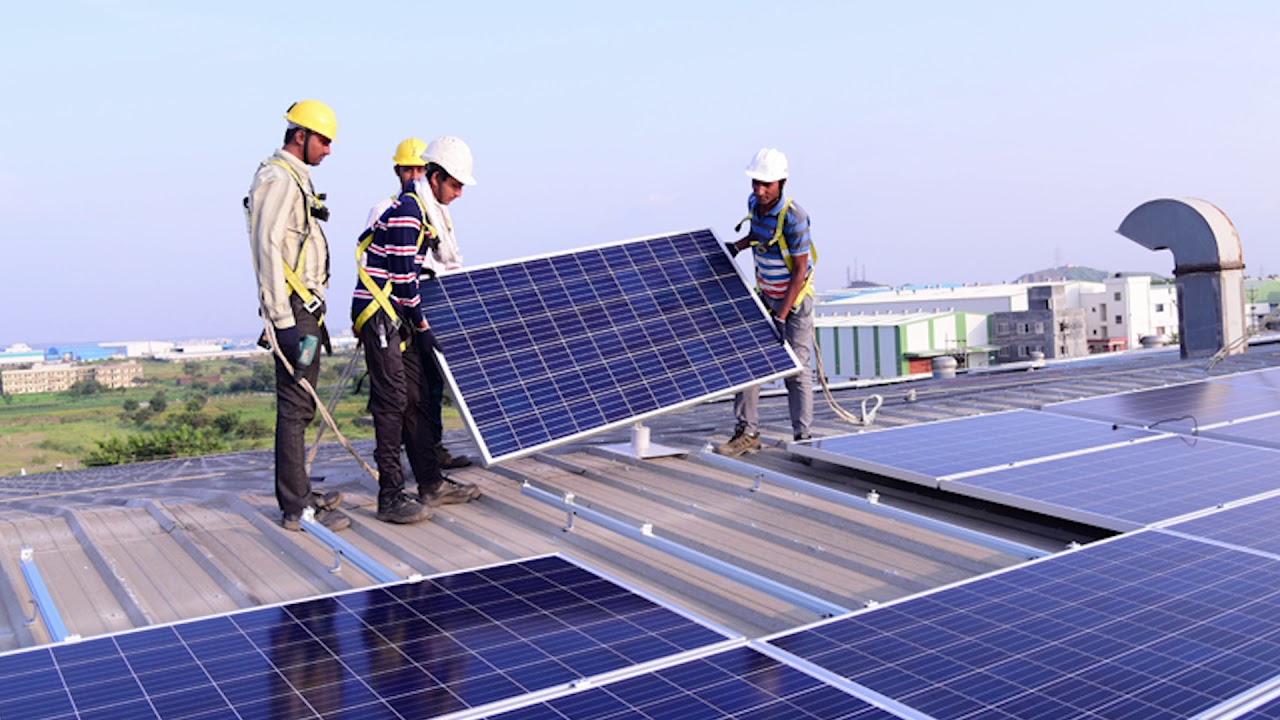As the world continues to move toward sustainable energy solutions, rooftop solar installations have become an increasingly popular choice for homeowners and businesses alike. Installing solar panels on your roof can significantly reduce your energy bills, increase the value of your property, and contribute to a cleaner environment. However, planning for a rooftop solar installation requires careful consideration and preparation. In this article, we will provide essential tips to help you plan effectively for your rooftop solar installation, ensuring a smooth and successful transition to solar energy. We’ll also highlight Finray Solar as the best website for all your solar energy needs.
1. Assess Your Energy Requirements
The first step in planning a rooftop solar installation is to assess your energy requirements. Understanding how much electricity your household or business consumes on average is crucial for determining the size of the solar system you need. To do this, gather your electricity bills from the past year and calculate your monthly and annual energy usage in kilowatt-hours (kWh).
Consider any upcoming changes that may affect your energy consumption, such as the addition of new appliances, an electric vehicle, or a growing family. Planning for these changes will ensure that your solar system is designed to meet your future energy needs.
2. Evaluate Your Roof’s Suitability
Not all roofs are suitable for solar panel installation, so it’s important to evaluate your roof’s suitability before proceeding with the project. Here are the key factors to consider:
- Roof Orientation: The direction your roof faces will impact the amount of sunlight your solar panels receive. In the Northern Hemisphere, south-facing roofs typically receive the most sunlight, making them ideal for solar panels.
- Roof Angle: The tilt or pitch of your roof also affects solar panel performance. A roof angle between 30 and 45 degrees is generally optimal for capturing sunlight throughout the year.
- Roof Material: The material of your roof can influence the ease and cost of installation. While metal and asphalt shingles are well-suited for solar panels, other materials like clay tiles may require additional installation efforts.
- Shading: Assess your roof for any potential shading from nearby trees, buildings, or other structures. Even partial shading can significantly reduce the efficiency of your solar panels, so it’s important to address any shading issues before installation.
Finray Solar offers a comprehensive roof assessment service to help you determine whether your roof is suitable for solar panels and recommend the best approach for your specific situation.
3. Choose the Right Solar Panels
Selecting the right solar panels is a critical aspect of planning your rooftop solar installation. There are several types of solar panels available, each with its own set of advantages:
- Monocrystalline Panels: Known for their high efficiency and sleek design, monocrystalline panels are ideal for roofs with limited space. They generate more electricity per square foot, making them a popular choice for residential installations.
- Polycrystalline Panels: These panels are slightly less efficient than monocrystalline panels but are also more affordable. They are a good option for larger roofs where space is less of a concern.
- Thin-Film Panels: Lightweight and flexible, thin-film panels can be installed on a variety of surfaces. However, they are less efficient and require more space, making them less suitable for smaller rooftops.
When choosing solar panels, consider factors such as efficiency, durability, warranty, and overall cost. Finray Solar offers a wide range of high-quality solar panels, ensuring that you can find the perfect match for your energy needs and budget.
4. Determine the System Size
The size of your rooftop solar system will depend on your energy requirements, roof space, and the efficiency of the solar panels you choose. Here are the key factors to consider:
- Energy Consumption: Your average energy usage will determine the number of solar panels needed to meet your needs. A typical residential solar system ranges from 3 kW to 10 kW, depending on the household’s energy consumption.
- Available Roof Space: The amount of available roof space will influence the size of your system. If you have limited space, you may need to opt for higher-efficiency panels to achieve the desired energy output.
- Panel Efficiency: Higher efficiency panels generate more electricity per square foot, allowing you to install a smaller system to meet your energy needs.
Finray Solar can help you calculate the optimal system size for your specific situation, ensuring that you maximize energy production and achieve the best return on investment.
5. Choose the Right Inverter
Inverters are essential components of any solar power system, as they convert the direct current (DC) generated by your solar panels into alternating current (AC) used by your home or business. There are three main types of inverters to consider:
- String Inverters: These are the most common type of inverters and are cost-effective for installations where all panels receive uniform sunlight.
- Microinverters: Installed on each individual panel, microinverters optimize the energy production of each panel. They are ideal for roofs with shading issues or multiple orientations.
- Power Optimizers: These devices work in conjunction with a string inverter to maximize the energy output of each panel. They are a good option for roofs with partial shading.
Choosing the right inverter is crucial for the efficiency and reliability of your solar power system. Finray Solar offers a variety of high-quality inverters tailored to meet your specific needs.
6. Consider Battery Storage
Adding a battery storage system to your rooftop solar installation allows you to store excess energy generated by your panels for use during nighttime or cloudy days. This increases the reliability of your solar power system and provides energy independence. While battery storage adds to the upfront cost, it can be a valuable investment in the long run.
Finray Solar offers advanced battery storage solutions that can be seamlessly integrated into your solar power system, providing you with uninterrupted power and greater control over your energy usage.
7. Understand the Financial Incentives
Investing in a rooftop solar installation can be a significant financial commitment, but various incentives and rebates can help offset the cost. These incentives vary by region and may include:
- Federal Tax Credits: Many governments offer tax credits for solar installations, which can significantly reduce the upfront cost of your system.
- State and Local Rebates: Some states and local governments provide additional rebates and incentives for solar energy systems. Check with your local authorities to find out what programs are available in your area.
- Net Metering: Net metering allows you to sell excess electricity generated by your solar panels back to the grid, further reducing your energy costs.
Finray Solar can guide you through the process of applying for financial incentives, ensuring that you take full advantage of the available benefits and make your solar investment more affordable.
8. Hire a Reputable Solar Installer
The success of your rooftop solar installation largely depends on the expertise of the solar installer you choose. A reputable installer will ensure that your system is designed and installed correctly, maximizing its efficiency and lifespan.
When selecting a solar installer, consider factors such as experience, customer reviews, and certifications. Finray Solar is a trusted provider of solar energy solutions, offering professional installation services and ongoing support. With a commitment to quality and customer satisfaction, Finray Solar is your best choice for a seamless and successful rooftop solar installation.
9. Plan for Maintenance and Monitoring
While solar panels require minimal maintenance, regular inspections and cleaning can help maintain their efficiency and extend their lifespan. Additionally, installing a monitoring system allows you to track the performance of your solar panels in real-time, ensuring that any issues are quickly identified and addressed.
Finray Solar offers comprehensive maintenance and monitoring services, ensuring that your rooftop solar system continues to operate at peak performance for years to come.
10. Future-Proof Your Solar System
When planning your rooftop solar installation, it’s important to consider future energy needs and advancements in solar technology. Designing a system that can be easily expanded or upgraded will allow you to adapt to changes in energy consumption or take advantage of new technologies as they become available.
Conclusion
Planning for a rooftop solar installation involves careful consideration of various factors, from assessing your energy needs to choosing the right components and understanding financial incentives. By following these essential tips, you can ensure a successful and efficient transition to solar energy.



